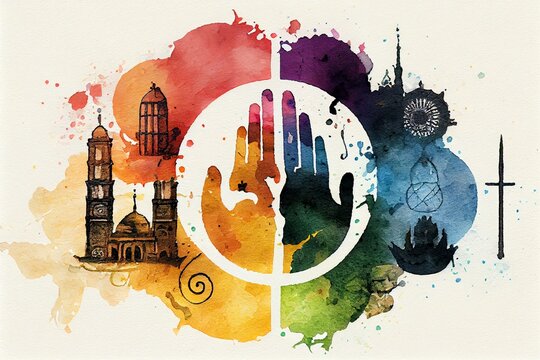Muslim Scientists and Thinkers–Muhammad Ibn al-Idrisi
By Syed Aslam, science@muslimobserver.com
Muhammad Ibn al-Idrisi was born in Andalusian city of Ceuta, in 1099 C.E. He was the descendant of Idrisid the ruler of Morocco who were said to be the direct descendant of Hazrat Hasan (ra) the grandson of Prophet Muhammad (s). Al-Idrisi received his education in Cordoba. He traveled to many distant places, including Europe, Africa and Asia to gather geographical data and plant samples. After traveling a few years he gathered enough information and accurate measurements of the earth’s surface to complete a rough world map. His fame and competence eventually led to the attention of Roger II, the Norman King of Sicily, who invited him to produce an up-to-date world map. He left Andalusia and moved to Sicily and worked in the court of the Norman king till he died in the year 1166 CE.
Mohammad al-Idrisi was a great geographer, cartographer, botanist, traveler and poet. In the West he is best known as a geographer, who made a globe using a silver sphere for King Roger of Sicily.
Al Idrisi’s contribution to geography was tremendous. His book; ‘Nuzhat al-Mushtaq fi Ikhtiraq al-Afaq,’(The Delight of Him Who Desires to Journey Through the Climates) also known as Roger’s Book, is a geographical encyclopedia which contains detailed maps and information on European countries, Africa and Asia. Al-Idrisi completed his encyclopedia in a very unique way. In addition to his personal travel and scholarship, he selected some intelligent men who were dispatched to distant lands accompanied by draftsmen. When these men returned, al-Idrisi inserted the information in his treatise. On the basis of these observations made in the field, and from data derived from earlier Arabic and Greek geographers, he brought the data up to date. The book and associated maps took 15 years to complete. It is unquestionably among the most interesting monuments of Arabian geography. In addition, the book is the most voluminous and detailed geographical work written about 12th century Europe.
Al-Idrisi compiled a more comprehensive encyclopedia, entitled ‘Rawd-Unnas wa-Nuzhat al-Nafs’ (Pleasure of Men and Delight of Souls). Al-Idrisi’s knowledge of the Niger above Timbuktu, the Sudan, and of the head waters of the Nile was remarkable for its accuracy. For three centuries, geographers copied his maps without alteration. The relative position of the lakes form which the river Nile starts its journey, as mentioned in his work, does not differ greatly from the modern map.
Al-Idrisi built a large global map made of silver weighing approximately 400 kilograms. He meticulously recorded on it the seven continents with trade routes, lakes and rivers, major cities, and plains and mountains. It is known to have been a colossal work of geography, probably the most accurate map of Europe, north Africa and western Asia created during the Middle Ages. The presentation of the Earth as a round globe was revolutionary idea in the Christian world because they believed that the earth was flat. Al-Idrisi knew that the earth was round, and he even calculated the circumference of the earth to be 22,900 miles, a difference of eight percent from the present value, and explained the revolutionary idea about earth like this; “The earth is round like a sphere, and the waters adhere to it and are maintained on it through natural equilibrium on the surface of the earth, the air which suffers no variation. It remained stable in space like the yolk in an egg. Air surrounds it on all sides.
Al-Idrisi’s book, KitÄb nuzhat al-mushtÄq, represents a serious attempt to combine descriptive and astronomical geography. This book was not as grand as his other books, apparently because some truths of geography were still veiled from the author, nevertheless it is also considered a major geographic monument.
He also made the world map on a great disk almost 80 inches in diameter and weighing over 300 pounds–fabricated out of silver, which was chosen for its malleability and permanence.
Al-Idrisi’s other major contribution was his work on medicinal plants, which he discussed in several books, especially Kitab al-Jami-li-Sifat Ashtat al-Nabatat. (Simple Book of Medicinal Plants) He studied and reviewed all the literature on the subject of medicinal plants and came to the conclusion that very little original material had been added to this branch of knowledge since the early Greek work. He started collecting medicinal plants wherever he he traveled. Thus, he is credited for having added a large number of new medicinal plants, together with their evaluation to the medical science. He has given the names of the herbs in many languages like Greek, Persian, Hindi, Latin, Berber and Arabic.
Al-Idrisi was a traveler who wrote about what he saw–some historians compare him to Marco Polo–but al-Idrisi’s work was much more scientific, and generally more objective, than Polo’s work. While al-Idrisi’s books have survived in their original manuscript form, whereas Marco Polo’s writings exist primarily as later transcriptions which were often altered.
Al-Idrisi, no doubt, was a great geographer and traveler who produced original work in the field of geography and botany. Some historians regard him as the greatest geographer and cartographer of the Middle Ages. His books were translated into Latin and became the standard books on geography for centuries, both in the east and west.
11-9













2009
3,215 views
views
2
comments